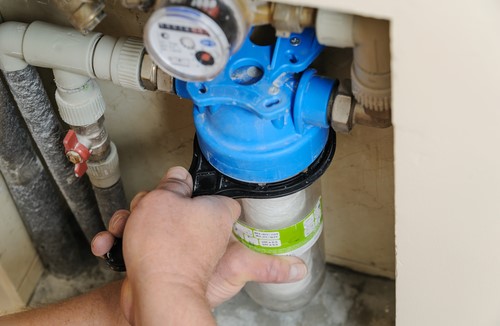For those considering a future in the energy sector along with an MBA degree, determining which schools boast superior programs for energy management careers might be interesting. As our planet increasingly prioritizes sustainable practices, there is an ever-greater call for adept professionals.
The best MBA admissions consultants can help you pursue top programs for renewable energy. These programs can give you both general business expertise and particular managerial abilities critical for prospering amid these ongoing shifts.
Selecting an MBA school for renewable energy management career involves multiple considerations. Apart from finding a program with courses related to energy policy, economics, and technology, it is crucial to opt for one that emphasizes sustainable development, renewable resources, and environmental management, such as one of the reputable online environmental science degree programs.
Exploring programs featuring tracks or specializations in energy management can also provide focused training on the subject matter. Furthermore, seeking internship opportunities or connecting with industry professionals can help gain practical experience.
Why Choose an MBA in Renewable Energy?
This course is an option for anybody who wishes to work in the renewable energy or power industries. To succeed as a future leader, a student requires extensive knowledge, strategic thinking, sound judgment, a global perspective, adaptability, and truthfulness. This management course may advance a student’s career and aid in developing these abilities.
Career Options for Those with an MBA in Renewable Energy
Let’s take a deeper look at a few of the most prominent management careers available to those with a green MBA.
1. Marketing and Management
Whether it’s the newest smartphone or renewable energy, individuals need to successfully market these ideas and goods to others. If you want a company to spend millions on solar PV panels or other sustainable energy sources, what arguments would you use?
Unfortunately, not everyone is aware of sustainable methods. Using your master’s degree in sustainability to promote environmental sustainability is a terrific way to put your marketing and advertising skills to work.
As per PayScale, the average compensation for a person with an MBA is $101,019.
2. Fossil Fuel Business
Fossil fuel businesses may not be considered a viable option by the general public. Yet contrary to popular belief, these businesses are keen to implement environmentally friendly policies. Oil giants like BP, ExxonMobil, and Shell have pooled their resources to support environmentally friendly initiatives.
List of the Best MBA Schools for Energy Management
Embarking on a career path centered around Energy and Natural Resources can set individuals up for success by seeking out educational institutions near thriving industry players such as those in Texas (USA), Alberta (Canada), or Scotland. That said, aspiring professionals should keep their options open because global business schools offer bespoke MBA programs focused on the energy sector and related fields.
Check out this roster for potential educational outlets if you’re interested:
1. Stanford GSB
The Stanford Graduate School of Business is renowned for its MBA program with a distinct focus on energy and natural resources. This program offers courses on energy markets, policy, and technology to provide students with in-depth knowledge of the industry. Additionally, various research centers and industry partnerships are established to further enhance the learning experience.
2. MIT Sloan
Similarly, MIT’s MBA program includes a concentration in energy and sustainability. The curriculum encompasses energy economics, policy, and technology courses while providing hands-on experience through the Energy Ventures Club and Energy Initiative.
3. McCombs School of Business
The University of Texas McCombs School of Business offers an MBA concentration in energy finance and development with courses covering renewable energy sources, financial planning, and energy policy. Moreover, the faculty has actively pursued partnerships with leading energy organizations to ensure students receive real-world perspectives.
4. Ross MBA
Another leading business school that provides high-quality sustainability education is the University of Michigan Ross School of Business. Its Ross MBA program includes a track in sustainability and business that covers relevant topics such as energy management practices and sustainable enterprise models, alongside offering hands-on training through Erb Institute for Global Sustainable Enterprise.
5. Yale
Yale’s School of Management offers its students an opportunity to concentrate on studying Energy markets by offering courses covering this crucial topic along with policies and technology domains. Their Yale Center for Business provides practical training opportunities for students looking to gain experience in business management and environmental problem-solving skills.
6. Technological Institute of Oregon
One of North America’s most popular renewable energy programs is the Bachelor of Science and Master’s degree in Sustainable Energy Engineering offered by Oregon Institute of Technology. In this way, they help students create, manage, and execute green energy solutions. Math, physics, and chemistry are all covered, as well as resource management, wind energy, photovoltaics, and fuel cells, all of which make up the core curriculum.
Do Green MBA Degrees Provide Value? A Closing Remark on Sustainable Management Master’s Degrees
Is there any practical benefit to being an MBA student? An MBA in sustainability is definitely worthwhile. Several doors may be opened for you after you have your MBA. An MBA with a concentration in sustainable energy management provides you with expert knowledge in your chosen sector. It’s possible that you’ll get paid quite well for your efforts.
There is a plethora of excellent institutions offering MBA programs with a focus on sustainability. Green MBA programs are now the most distinctive indicators of green business transformation.
If you’re interested in making a difference for the planet’s future, enrolling in and completing a green MBA degree is a great first step.






















